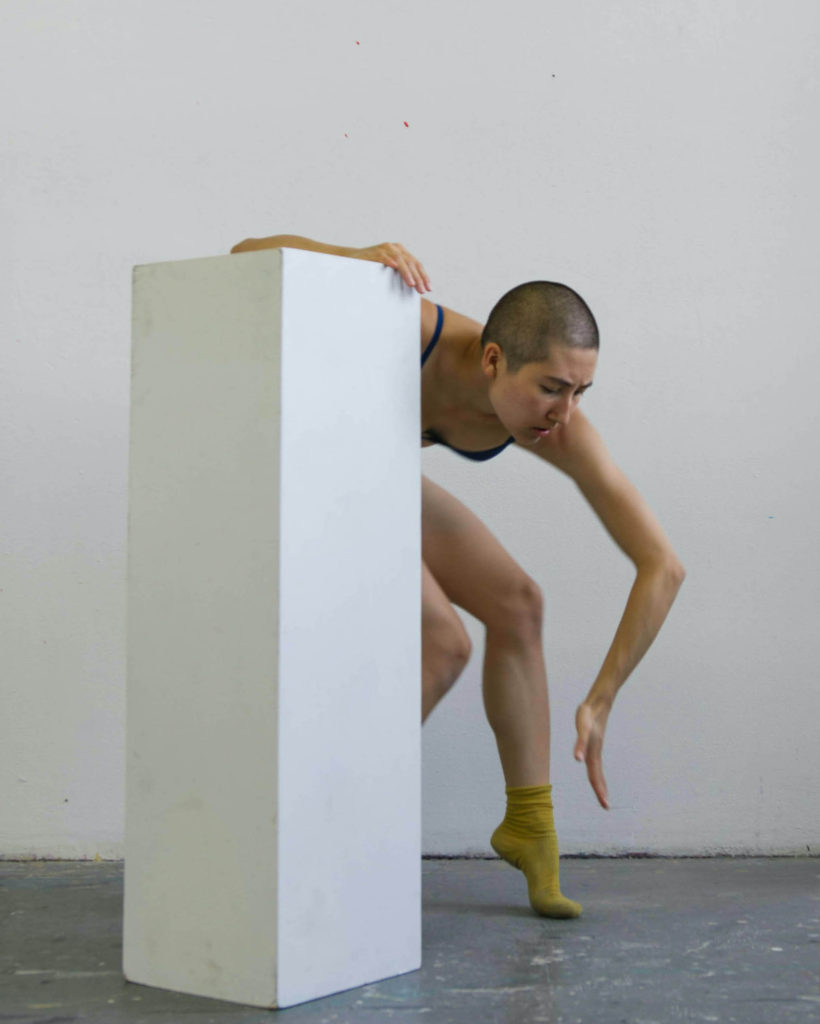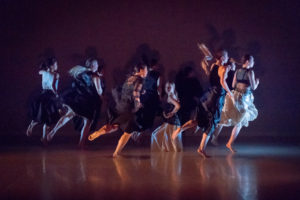Young and Independent in Vancouver: Surviving these pandemic times - Vancouver Ballet Society
- Home
- Features 2020 - 2023
- Young and Independent in Vancouver: Surviving these pandemic times

By Rachel Silver Maddock
Working as a young independent dance artist in Vancouver is a labour of love, even at the best of times. Trying to make a living in the gig economy in one of the world’s most expensive cities is a feat only attempted by the bravest, most energetic and flexible of artists. But for three young dancers, despite the increased challenges of a pandemic, creative opportunities have been found.
After graduating from Simon Fraser University’s BFA dance program in 2018, Anya Saugstad says it was the connections she made there and at Arts Umbrella PReP training program that helped launch her career. Following two internships, she landed paid contracts with Lesley Telford of Inverso Productions (PReP program director, now part of Inverso) and Rob Kitsos (SFU faculty) for the upcoming Dancing on the Edge Festival in July.

Saugstad — whose own explosive group choreography investigates darker emotions like anger and frustration — has taken full advantage of programs in the city geared toward emerging artists that offer residencies and opportunities to present work. Even so, working as a dancer is a hustle. There were times where Saugstad felt like she was suspended between projects, but, before the pandemic, things were starting to line up to allow her to work as a dancer full-time without side jobs.
“Vancouver is a bit of a DIY community,” says Jenna Berlyn, a 2019 graduate of Modus Operandi training program run by David Raymond and Tiffany Tregarthen, founders of Out Innerspace Dance Theatre and dancers with Kidd Pivot. “There are so many offshoot festivals and smaller venues. It’s a good environment for trying things out and making your own work with low stakes.”
Since graduating, Berlyn immediately began applying for government arts grants — a lifeline for Canadian artists. New initiatives in provincial and federal funding bodies have made it easier for emerging dance artists to get their first grant. Before and during the pandemic, Berlyn benefitted from a professional development mentorship grant to work with performer and choreographer Francesca Frewer (who graduated from Modus Operandi in 2014).

During the pandemic, Berlyn has kept herself moving with solo practice, using her weekly membership at an artist-run studio, Gold Saucer, to investigate choreographic ideas. She posts excerpts of her strong physical style to activate her social media and stay connected. “I don’t love social media,” she says, “but especially now [during the pandemic], it’s useful to see what people are up to and show you are still active and training.” After taking some time away from the city last year, she is back and working as an apprentice with a small stalwart company, Kinesis Dance somatheatro.
In a city with only one full-time dance company — Ballet BC — the majority of dancers work contract-to-contract, usually for multiple companies or independent choreographers. But balancing contracts can be stressful, both financially and creatively. “Lulls are just part of this career,” says Shion Skye Carter, who graduated from SFU’s dance program three years ago. Though she has had busy times rehearsing for multiple shows, Carter has also experienced months of relying on side jobs like teaching dance.
“What I’ve learned since graduating and especially since the pandemic,” she says, “is to try to keep working one way or another. The more you practise that, the more paid opportunities come your way.”
Carter has landed a number of paid gigs since graduating, such as with Vanessa Goodman’s company Action at a Distance — opportunities that started with internships or mentorships. She also creates her own work individually and with her musician partner, Stefan Nazarevich, in their interdisciplinary duo, Olive Theory. Carter is steering her first major solo project, set to premiere in Montreal this fall (COVID-depending). Titled Residuals (住み・墨), it investigates her Japanese heritage and the connection between her dance and calligraphy practices.

In some ways, the Vancouver model rewards self-starters, dancers who can motivate themselves to find and make their own work. But the leap from being a student to running one’s own projects can be jarring: suddenly, says Carter, you are not only a performer, “but also a creator, administrator, director, grant writer… That can get overwhelming for sure.”
Though there is institutional support from funding bodies and organizations like the Dance Centre, all three stress the importance of reaching out to ask for help from older established artists, either former teachers or others in the community whose work they admire. There is a lot of generational mixing in Vancouver — young dancers often find themselves taking class alongside the choreographers they want to work for, which can be intimidating.
In a community with virtually no open auditions, Vancouver dancers rely on networking — taking class, going to shows, volunteering in other people’s work — and making their own work to create opportunities. The pandemic has caused real challenges in this area by preventing dancers from physically being in the same spaces with colleagues and friends, where inspiring conversations can lead to new projects. Independent artists are missing professional drop-in classes, which are a hub for a community without access to daily company class.
Despite these roadblocks, Berlyn, Saugstad and Carter are finding ways to keep the fire burning creatively. Being a freelance dance artist requires a kind of resilience and commitment that even a pandemic can’t destroy — in spite of lost income, these and other dancers are still making interesting work.
To stay choreographically inspired, Berlyn finds it helpful to think about exercising and dancing separately, since staying in shape physically and creatively are different skills. Though the digital deluge of dance content can feel like overload, she often takes the time to watch a livestream performance, where something might strike a chord or prompt a new idea. Every day, she makes a point to stay aware of her surroundings, of nature and the movement around her, to see what that might provoke.
Saugstad keeps herself choreographically fit by getting into the studio no matter what. Early in the pandemic, she shifted from making group work to choreographing on herself out of necessity. After several months, she realized what she was doing was actually research for a new solo. She’s also been exploring genres like music videos, and trying new ways to make her work “read” better digitally.
When she entered the professional milieu, Saugstad noticed how many dance artists are making strong work seemingly “out of nothing” in Vancouver. She says it’s the kind of place where “if there is one ounce of you that doesn’t want to make it work, it’s not going to happen.” Carter says the DIY model in Vancouver encourages dance artists to stumble through, often resulting in work that has an honest and gritty edge to it.
Judging by the example of this trio of dancers, surviving the pandemic will produce a new generation of gritty and resilient artists.

